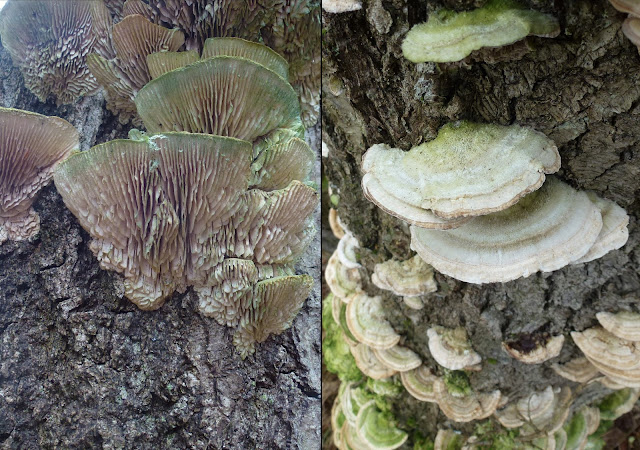Talk as we travelled was about the weather, but happily the drizzle petered out and wasn’t a nuisance, though it remained grey all day.
There was lots of bird song at the Forestry Commission’s car park at Santon Downham – we heard song thrushes and robins for much of the day, plus coal tit here. We crossed the bridge over the river Little Ouse, returning to Norfolk by doing so; nearby there was a nuthatch on a tree top. On the river were mute swans, mallards and moorhen, and two little grebes became three, then four.
 |
| Little Ouse. We liked the sculpture-like upturned branches in the river. |
 |
| Southern bracket and digiscoped hoof fungus. |
Ann has trained us well, and many of us found cigar galls on reeds.
 |
| Parsley piert. |
 |
| Oak mazegill. |
 |
| Stonechat, male, digiscoped. |
We drove to Lynford Arboretum for the rest of the afternoon. We paused where the Forestry Commission puts out food. For moment it seemed like it was mostly blue and great tits feeding, though soon yellowhammers appeared.
 |
| Yellowhammer, digiscoped in the gloom. Still, you can see what it is. |
Joining other birdwatchers a little farther along, one of them was alert to small birds arriving to perch high on distant conifers: hawfinches. There were four – two and two – that stayed for a good while. They were distant, though their distinctive profile was clear through telescopes.
 |
| Possibly the worst photo ever included in a blog: very distant, digiscoped hawfinches on a gloomy day. |
Retuning towards the bridge, several small birds were moving around the empty bird feeders here, including a marsh tit that landed on one of the low pillars on the bridge. At the feeders the yellowhammers were there again, and a siskin came to drink.
Through this guided walk, and the previous week's walk at Hickling, Honeyguide donated £175 to Norfolk Wildlife Trust.
Chris
Durdin




still they were hawfinches, which you saw but I did not; well done for braving the forecast!
ReplyDeleteHope to see you on another occasion.
ReplyDelete